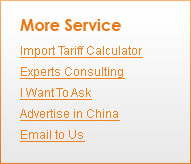Industry Voices: Is Vietnam the New Sourcing Frontier?
[2009-01-15]
For almost 30 years, China has been the go-to place for fulfilling the needs of U.S. importers to make clothing, textiles, footwear and accessories.
It is an efficient place where garment producers are used to large orders and delivering on time. In many cases, the sample shops of the larger apparel manufacturers in China are larger than most apparel factories in the United States.
But labor costs in China are inching up, and the country's currency value is rising, making goods more expensive. So people are shopping around.
When making sourcing decisions, most apparel and textile companies consider a host of items. Key elements include free-trade agreements that eliminate tariffs, poor logistics that make shipping goods a nightmare, lack of energy, labor compliance issues, political unrest, lack of raw materials, safeguard quotas and chemical-safety problems.
After weighing these elements, many apparel designers and executives are opting to use Vietnam as an alternative to China. The country has seen a number of apparel factories pop up after the Southeast Asian nation joined the World Trade Organization in 2007.
Labor costs are often lower than in China, and everyone remarks about how the country has "good needle," meaning that workers' sewing skills are high-quality.
Labor costs are often lower than in China, and everyone remarks about how the country has "good needle," meaning that workers' sewing skills are high-quality.
Vietnam is now the No. 2 apparel supplier to the United States, a position once occupied by Mexico. During the year-to-year period ending in October, the country shipped $5.3 billion in apparel and textiles to the United States, up 26 percent from the same time period last year.
But there are many pros and cons to working in that country:
PROS:
• No safeguard quota issues foreseen in 2009
• Comparatively lower labor costs
• Some independent owners of facilities
• Temperate climate conditions
• Minimal logistical issues for shipping
• Average knowledge of apparel sewing to U.S. standards
CONS:
• Most raw materials must be imported, resulting in longer lead times
• Most manufacturing facilities are government-controlled
• Financing of product materials and actual production is unstable
• Contractual agreements are not always honored
• Labor-compliance issues exist in many facilities
• Documentation issues arise for lack of education
• There is difficulty in working directly with the facilities, with brokers and agents acting as barriers
• Quality of raw materials specified vs. that which is actually provided often varies
In order to achieve success and consistent quality of production, you must have some production-control element set up at the factory. You will probably be sourcing the raw materials and designating where the vendor should buy them. In the case of Vietnam, you should actually purchase the materials yourself and have them shipped to your manufacturer.
In addition, you must verify the standard of all raw materials when they are received in bulk and not rely on what was sent as a pre-production sample.
Your sourcing personnel must also be teachers and trainers to factory workers and executives, not just profilers of factories.
Also, keep daily tabs on what is going on with your orders through the people you have designated at the factory to watch your order. Do not assume that everything is going perfectly.
Also, keep daily tabs on what is going on with your orders through the people you have designated at the factory to watch your order. Do not assume that everything is going perfectly.
If you are willing to put into place all that is required to make sure your costs are adhered to, quality specifications are met and products are delivered on time, then Vietnam is a worthwhile investment of time and money.
In these economic times, you must do what it takes to eliminate or reduce the risk factors of offshore production. It takes qualified people to perform what is necessary to make it all worthwhile.
Some countries have realized that in order to do business in the U.S. marketplace, they must set up offices in the United States. These countries now have knowledgeable people who understand the necessary processes to produce for U.S. importers. Currently, Vietnam has not done this. Therefore, you must set up all the checks and verifications to ensure that you get what you ordered.
The apparel industry can put people to work with dignity, but it takes your watchful oversight to make it happen. Be diligent in monitoring your production.
Source: www.apparelnews.net
Keywords:Apparel
Related Articles:




